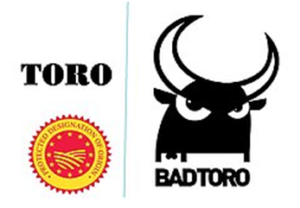Justice Manmohan Singh of the Delhi High Court has remarked in a judgment, “The world is a global village.” This sentiment captures the essence of our interconnected era, where globalization and interconnected markets continually redefine our world. Today, the judgments handed down in courtrooms across the globe can have far-reaching consequences and the ripples of these legal decisions extend far beyond their local jurisdictions, influencing economies and industries worldwide.
Welcome to “A View from Afar,” a series dedicated to examining international judgments and their far-reaching impacts. Through this series, we aim to bridge the gap between diverse legal systems and their global repercussions, offering you a panoramic view of the intricate interplay between law and commerce.
We will delve into landmark rulings from various corners of the world, unpacking the legal reasoning behind such decisions and scrutinizing their practical implications. Each article will provide a thorough analysis, shedding light on how these judgments affect not only the parties directly involved but also affect the regulatory frameworks, corporate strategies, and market dynamics on a global scale.
Whether it is a judgment delivered in any country across the world, we will share our views on its profound impact in other jurisdictions navigating through the labyrinth of international jurisprudence.
In trademark law, protecting established marks from infringement is a fundamental principle. This protection becomes especially significant when a new trademark application incorporates a substantial part of an existing mark, raising concerns about confusion, misappropriation, and consumer perception. These concerns intensify when geographical indicators, like Protected Designations of Origin (PDOs), are at play.
Join us in this further instalment of “A View from Afar” as we delve into the nuances of the decision issued by the European Union Intellectual Property Office’s (EUIPO) Board of Appeal, wherein it rejected the registration for the mark “BADTORO” on the grounds that it incorporated the PDO “TORO” (used to protect Spanish wines) as its dominant part, thereby taking unfair advantage of its reputation and creating confusion.
This article explores the nuances of trademark subsumption—when a new mark incorporates a recognizable or a dominant part of an existing mark, and the legal and practical considerations that lead to the rejection of such trademark applications.
In 2018, Toroloco SA, (the applicant) filed for the registration of the trademark “BADTORO,” at the European Union Intellectual Property Office (EUIPO), which included a logo depicting an angry bull. The application sought protection for a range of alcoholic beverages, including cocktails, aperitifs, vermouth, and sangría—specifically excluding beer and wine. However, the application faced opposition on the basis of the Protected Designation of Origin (PDO) “TORO,” which protects wines produced in Spain’s Toro region.

The opposition to the “BADTORO” application centered on two key arguments:
- The use of “TORO” in the new mark constituted an indirect use of the PDO, even though the products under the mark (such as vermouth and sangría) were not wines.
- The inclusion of “TORO” would take advantage of the prestige and reputation of the PDO, creating an unfair association with the protected wines from the Toro region.
Initially, the EUIPO dismissed the opposition. However, upon appeal, the Board of Appeal upheld the opposition, concluding that the new mark subsumed the PDO “TORO,” unfairly leveraging its reputation and causing consumer confusion.
Legal Framework: Subsumation and Trademark Refusal
Under European Union trademark law, particularly Article 103 of Regulation (EU) No 1308/2013, PDOs are safeguarded from unauthorized use. Even when a new mark like “BADTORO” includes only a part of a PDO, if the inclusion leads to a perceived connection with the PDO-protected goods, refusal is likely.
The underlying rationale for these provisions is to prevent consumer confusion and to protect the integrity of products associated with specific geographical regions that are known for high-quality standards. In the case of the PDO “TORO,” this designation is tied to wines produced in Spain’s Toro region, which enjoy a well-established reputation for their distinct characteristics.
Bullish Branding Gone Bad
The crux of the EUIPO Board of Appeal’s decision lay in the fact that the mark “BADTORO” subsumed the PDO, “TORO” within it in entirety. The concept of subsumption arises when a significant part of an existing mark, is incorporated into a new trademark, creating an unfair association with the established mark. While the applicant argued that the addition of the word “BAD” and the associated image of an angry bull distinguished the mark, the Board of Appeal focused on the fact that “TORO” was the dominant and most recognizable part of the “BADTORO” trademark. Despite the addition of the word “BAD” and the presence of the bull logo, the mark still prominently featured the PDO “TORO,” leading to concerns over consumer perception.
The Board determined that “TORO” was not merely an incidental element of the “BADTORO” trademark but its central, most distinctive feature. For consumers, particularly those familiar with the “TORO” PDO, the word would immediately evoke associations with wines from the Toro region, despite the additional elements present in the new mark.
The Board further reasoned that EU consumers, especially those with some familiarity with the English word “BAD” and an understanding of the PDO “TORO,” would likely interpret the “BADTORO” mark as referring to the Toro region. The figurative element of an angry bull was viewed by the Board as reinforcing the connection to Spain and the TORO PDO. The bull is a well-known symbol of Spanish culture. Far from distinguishing the mark, the angry bull image actually strengthened the association with the TORO wine region.
Although “BADTORO” was intended to cover beverages other than wine, the Board concluded that many of the goods (such as vermouth and sangría) were comparable to wine in terms of their target consumer base and distribution channels. The overlap between these markets increased the likelihood of confusion, with consumers potentially associating the “BADTORO” products with the wines protected by the “TORO” PDO.
Another critical aspect of the Board’s decision was the doctrine of evocation, which refers to the exploitation of a PDO’s reputation, even in cases where the goods are not directly comparable to those covered by the PDO. The Board’s analysis focused on two primary issues. Firstly, the Board observed that the PDO “TORO”, enjoyed a strong reputation across the EU for its high-quality wines. The Toro region’s wines have established a prestigious reputation that transcends the geographical boundaries of Spain. As such, the unauthorized use of “TORO” within “BADTORO” would unfairly benefit from the PDO’s established reputation. Secondly, the Board noted that by incorporating “TORO” into “BADTORO,” the applicant would unfairly leverage the goodwill and reputation of the PDO. This was particularly problematic because the products sold under the mark “BADTORO” were unlikely to meet the quality standards associated with wines protected by the TORO PDO, even though the products themselves were distinct. The potential for confusion and the resulting exploitation of the PDO’s reputation played a central role in the Board’s decision.
Analysis & Author’s Notes
This decision and the facts surrounding it, prompted me to analyse the implications of the same from the perspective of Indian Trademark Law.
In Indian trademark law, the dominant feature principle plays a significant role in determining trademark disputes. It focuses on the most conspicuous or recognizable part of a trademark, which serves as a key element in consumer association and serves as the primary point of association with the source of goods or services. This principle mirrors the concept of subsumation which was discussed in “BADTORO” case. Indian Courts and Trade Mark Registries have frequently refused trademarks which have incorporated dominant elements of earlier trademarks on record in such a way that the old mark remains recognizable within the composite or altered mark.
Under Section 11 of the Indian Trade Marks Act, 1999, trademarks that are identical or deceptively similar to an existing registered mark can be refused registration if they are likely to confuse or mislead consumers about the origin of the goods or services. The dominant feature of a trademark often determines whether two marks are considered confusingly similar, even if other parts of the trademarks differ.
In situations where a new trademark subsumes or incorporates a significant portion of an existing mark, the Indian Courts and Indian Trade Mark Registries apply the dominant feature test to evaluate whether the new mark unlawfully encroaches upon the identity of the older mark, since this gives rise to a likelihood of confusion among consumers, leading them to believe that the products or services associated with the new mark originate from the same source as those under the older mark. Such confusion undermines the very purpose of trademark protection: to distinguish goods and services in the marketplace.
Mahindra & Mahindra Ltd. v. Mahindra Construction Company (2023)
Mahindra & Mahindra, a well-known automotive and construction company, filed an opposition against the registration of “Mahindra Construction Company” by a third-party entity. The company argued that the use of “Mahindra” in the new mark was an attempt to benefit from its established goodwill and would likely confuse consumers.
The Delhi High Court agreed with Mahindra & Mahindra, stating that “Mahindra” was a dominant feature that carried significant brand equity. The addition of the words “Construction Company” was not enough to differentiate the new mark, and the Court ruled in favor of Mahindra, ordering cancellation of the contested mark from the Register.
Godrej Consumer Products Limited v. Good Knight Electronics Pvt. Ltd. (2022)
Godrej, which is the registered proprietor of the mark “Good Knight” for mosquito repellents, opposed against the registration of the mark “GOODNIGHT ELECTRONICS” for electronic gadgets. Godrej contended that the dominant feature “Good Knight” was being misused to create an association with its well-known mosquito repellent products.
The Delhi High Court ruled in favor of Godrej, and observed that “Good Knight” was a dominant feature in both marks and that its use in electronics would confuse consumers into believing there was a connection between the two products. The Court refused the registration of the new mark.
Titan Company Limited v. Kamdhenu Limited (2023)
In this 2023 case, Titan Company, the owner of the famous “TITAN” trademark for watches and accessories, sought to challenge the registration of “TITANLUX” by Kamdhenu Limited, a company dealing in paints and coatings. Titan argued that the dominant feature of its well-known mark “TITAN” had been subsumed into the new mark “TITANLUX,” creating confusion among consumers.
The Delhi High Court ruled in favor of Titan, holding that “TITAN” was indeed the dominant feature of both marks, and the addition of “LUX” was insufficient to distinguish the two. The court found that the subsumation of “TITAN” within “TITANLUX” could mislead consumers into associating the new mark with Titan’s established brand. The court ordered the rectification of the “TITANLUX” mark from the register, reinforcing the importance of protecting dominant features in well-known marks.
Parle Agro Pvt. Ltd. v. Parle Products Pvt. Ltd. (2024)
In a landmark decision in 2024, Parle Agro, the maker of popular beverages like “Frooti,” brought a case against Parle Products for attempting to register the mark “FRUITI BITE” for a range of snacks. Parle Agro claimed that the dominant feature of its mark “Frooti” was being infringed by the new mark “FRUITI BITE,” as the phonetic and visual similarity would confuse consumers, especially given the near-identical marketplace of both products (beverages and snacks).
The Bombay High Court, applying the dominant feature test, held that “Frooti” was indeed the dominant element of both marks, despite the descriptive addition of “Bite” in the contested mark. The court noted that the average consumer, when encountering “FRUITI BITE,” would likely perceive it as an extension or variant of the “Frooti” brand. The court refused the registration of “FRUITI BITE,” emphasizing that the principle of protecting dominant features remains crucial in avoiding consumer confusion.
Amul Dairy v. Nandini Dairy (2024)
The Gujarat High Court addressed the principle of dominant features in the context of the dairy industry in Amul Dairy v. Nandini Dairy. In this case, Amul, a leader in the dairy sector with a dominant position, opposed Nandini’s application for the mark “AMULYA” for its new dairy products. Amul argued that the use of “AMUL” as part of “AMULYA” was confusingly similar to its trademark and would dilute the distinctiveness of the “Amul” brand.
The court examined the dominant feature of both marks, “AMUL,” and held that Nandini’s use of “AMULYA” created an impression that the new products were somehow associated with Amul. Despite the addition of “YA” in the new mark, the court found that “AMUL” was still the dominant part and would likely confuse consumers. The court ruled in favor of Amul, ordering the rectification of the trademark and affirming the relevance of the dominant feature principle in trademark disputes.
Key Takeaways for Companies, Start-ups, and persons wanting to adopt a trademark &apply for its registration:
- Conduct Thorough Trademark Searches & Investigations: Before applying for a new trademark, it is essential for businesses, start-ups, and individuals to conduct detailed trademark searches as well as comprehensive investigations. This includes searching for marks that might contain dominant features of well-known brands, even if they are not identical. The risk of subsumation—where your mark may contain a significant part of an older, well-known trademark—can be avoided through careful preliminary searches.
- Prioritize Distinctiveness: When designing a new trademark, ensure that it is distinctive and not merely an alteration or derivation of an existing well-known mark. The more distinct your mark is from established brands, the lower the risk of legal disputes. This also helps in creating a strong brand identity that stands out in the market. Avoid using dominant features or elements that are already associated with a well-known brand.
- Understand the Importance of Phonetic, Visual, and Conceptual Similarities: The dominant feature principle doesn’t only apply to exact visual or phonetic copies. Even conceptual similarities, where the dominant feature could evoke associations with a well-known mark, may trigger confusion. Companies should consider the overall impression that their mark creates in the minds of consumers and avoid incorporating elements that could lead to such confusion.
- Leverage the Power of Branding While Being Cautious of Overlap: Start-ups and smaller companies often face the temptation of adopting names or symbols that may appear appealing but inadvertently overlap with well-known trademarks. This could lead to legal conflicts and disputes that drain resources. While it is important to leverage branding, businesses must ensure that their chosen mark is sufficiently different from existing brands and their dominant features to avoid confusion or accusations of bad faith.
- Monitor and Enforce Trademark Rights Vigilantly: Once a trademark is registered, it is essential for businesses to actively monitor its usage in the marketplace. In case infringement or subsumation of the dominant feature occurs, prompt action should be taken, either through opposition during registration or through rectification proceedings in the courts. The success of protecting a mark often depends on the vigilance with which it is enforced.


